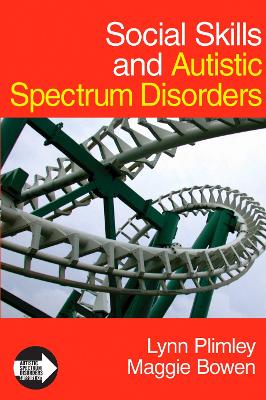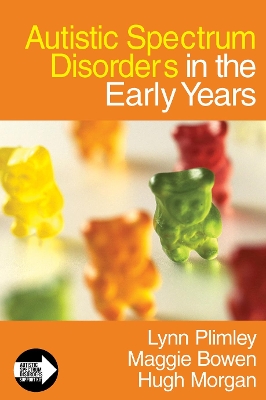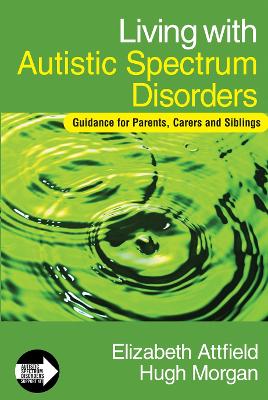Autistic Spectrum Disorder Support Kit
5 total works
Autistic Spectrum Disorders in the Secondary School
by MS Lynn Plimley and Maggie Bowen
'There can be no doubt that the action suggested by the authors to improve outcomes for pupils with ASD, would benefit the inclusion of all pupils' - Special Needs Information Press
'The book gives a clear insight into some of the issues which are important from the perspective of the pupil, the challenges they face and the behaviours that can result. It openly addresses the impact of these behaviours on a school and offers clear guidance and strategies. The options given are realistic, practical and achievable and the Reflective Oasis sections offer an ideal starting point for self-evaluation and staff training' - Mike Ridout, Head of Access and Inclusion Service, Bridgend LEA
'All those involved in education at secondary level including senior managers and governors will find this concise book informative in helping them to understand the needs of their pupils with ASD' - Ian Attfield, Advisory Teacher ASD, Birmingham Specialist Support Service
'The book not only gives sound advice, it helps the reader to find a wider range of sources of support and information... a useful, practical guide that makes the organisation of inclusive education achievable' - Special
'The book does have a number of useful strategies and tips, but it provides more than just a list of practical points. Support staff are encouraged to reflect upon their own practice and that of their school... The book is well worth buying and should appeal both to support workers and their managers' - Support For Learning
'The book fills a niche by distilling and providing information to busy teachers... an important little book that is quite readable and may be very useful to its intended audience' - American Psychological Association
When a young person with autistic spectrum disorders enters secondary school, there are lots of new factors to consider.
This books looks at:
" making good transitions from primary school
" how to provide helpful INSET for colleagues (including teachers, senior managers, support staff and lunchtime supervisers)
" using a special interest as a tool for learning
" record-keeping, IEPs and sharing information across the school
" subject disapplication and formal examinations
" social strategies to employ in a large high school
" useful tips for staff - what to do and what not to do
" work experience, careers and self-advocacy
The importance of working closely with parents is also covered, as is dealing with challenging behaviour.
'...the book not only gives sound advice, it helps the reader to find a wider range of sources of support and information...The authors have not sought to minimise the difficulties or to pretend that schools and individuals will not have to change or adapt, nor have they avoided difficult questions. What they have one is to write a useful, practical guide that makes the organisation of inclusive education achievable' - Resource File
Supporting Pupils with Autistic Spectrum Disorders
by MS Lynn Plimley and Maggie Bowen
'This book will be of value to all those who support pupils with an autistic spectrum disorder. However, as it tackles the day-to-day practice of teaching and working with such pupils it should be read by teachers too' - Tess Coll, autism outreach teacher
'There can be no doubt that the action suggested by the authors to improve outcomes for pupils with ASD, would benefit the inclusion of all pupils' - Special Needs Information Press
'This book will be a really useful resource for those supporting children with ASDs in a range of schools, both special and mainstream. It uses case study material collected from experience and discussions with staff, to illustrate dilemmas and strategies. It encourages reflection on practice by posing questions at different points. The book also provides many useful references to published materials and websites for readers to follow up and suggests how support assistants can work to become part of the whole staff team' - Dr Glenys Jones, University of Birmingham
Specifically designed to provide information and professional guidance for people working in educational support roles, this book focuses on the work carried out by Teaching Assistants in mainstream primary and secondary schools.
The book will give them the tools and awareness to work confidently with pupils from across the autistic spectrum, whilst validating their position within a staff team.
Using real-life case studies to illustrate common issues faced by support staff within any educational setting, it recogniszes the often tough situations they find themselves in with pupils, and with other members of staff, and will equip them with many basic strategies that will lead to effective working within their setting.
'The chapters are short and well structured. This book will be of value to all those who support pupils with an autistic spectrum disorder. However, as it tackles the day-to-day practice of teaching and working with such pupils it should be read by teachers too' - Special
Social Skills and Autistic Spectrum Disorders
by Lynn Plimley and Maggie Bowen
`The highly readable, accessible writing style and visually clear presentation allow the reader to dip in frequently to build up knowledge by accretion...This is an excellent book, ideal for those both new to working with people with ASD and also more experienced practitioners′ - Special magazine
Individuals with autistic spectrum disorders (ASDs) have difficulty in communicating and socializing. They perceive the world in a very different way to most people, and often find the behaviour of those around them confusing and unfair.
This book examines the concerns around inappropriate social behaviour that those living and working with children and adults face on a day-to-day basis. It discusses preventative measures and intervention strategies, and uses real-life case studies to illustrate these.
Issues covered include:
" an overview of what difficulties might be encountered at different stages in life
" strategies that can be used to alleviate the problems
" how to recognize triggers and create stress-free environments
" hints and tips for those living and working with individuals with ASDs.
Autistic Spectrum Disorders in the Early Years
by Lynn Plimley, Hugh Morgan, and Maggie Bowen
Looking at the early years of a child′s life, this book provides information on the services that are available for those from birth to five years, and addresses issues related to identification, assessment, teaching and learning and family support.
It is illustrated with case studies provided by parents and practitioners.
The following areas are discussed:
o the Code of Practice for SEN & the SEN and Disability Discrimination Act
o identification and assessment
o good practice examples of multi-agency collaboration and provision
o partnership with parents
o social skills and behaviour
o alternative intervention and home-based programmes
o the transition from pre-school to school.
Professionals in Health, Social Services and Education, pre-school playgroups, nursery staff, parents and carers will all find this book useful.
Conference Information
The Good Autism Practice (GAP) conference is based on the successful foundations of the Good Autism Practice (GAP) journal, which provides a platform for acknowledging and sharing good practice in autism.
Living with Autistic Spectrum Disorders
by Elizabeth Attfield and Hugh Morgan
"This is a really practical tool........ the structure of the book is clear and uncomplicated for the reader to access. This book is based on a wealth of experience of working closely both with individuals with Autism and their families. It will be a revelation to professionals interested in this area and a comfort to carers who live the experience. Most importantly, it reminds us of the barriers to positive parent/professional partnership and challenges us to build supportive bridges to effective intervention for the individual with Autism. Autism NI (PAPA) was created out of such a dynamic approach and therefore welcomes this significant commentary on this critical issue."
By giving a concise account of what life may be like following the diagnosis of autistic spectrum disorders (ASDs) in the family, this book examines service provision at different stages, and provides information for parents, carers and practitioners' - Arlene Cassidy, Chief Executive, Autism NI
Parents want support and advice during and after a diagnosis of ASDs, and professionals want to be able to give the right answers. This book will meet the needs of both.
Issues dealt with include:
" how to help the family
" how to help brothers and sisters
" preparing children with ASDs for the world outside
" keeping expectations high
" how to work together with schools and other agencies
" finding community links
'In my view it would be a good read for relatives, friends and teachers in training to enable them to understand many of the issues associated with children who have an autism spectrum disorder (ASD). It points up the various facets of having and living with a child with autism - as far as possible from a positive point of view. The authors, from their obvious extensive experience, have identified many problems and circumstances that parents/carers are likely to meet and that can be tackled in a wide variety of ways. The book is designed to raise these for consideration - and this it does well' - Support for Learning, Volume 22, Number 2



